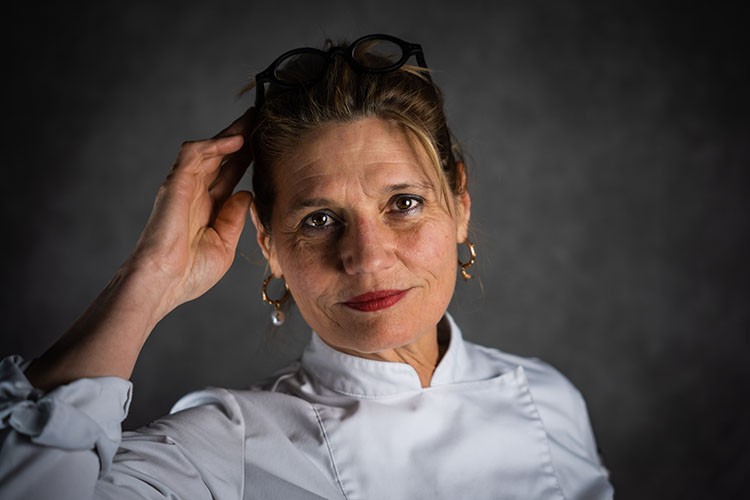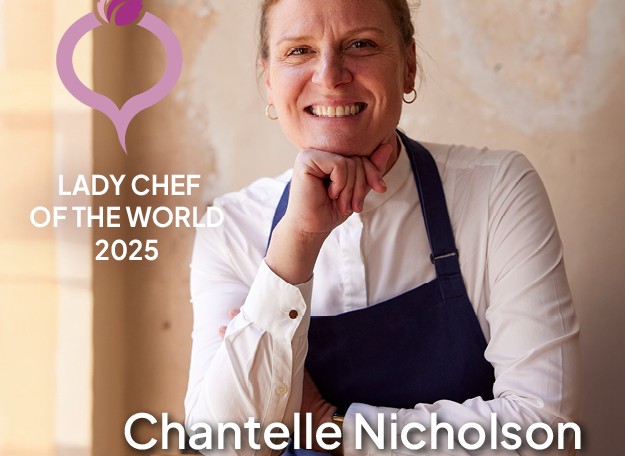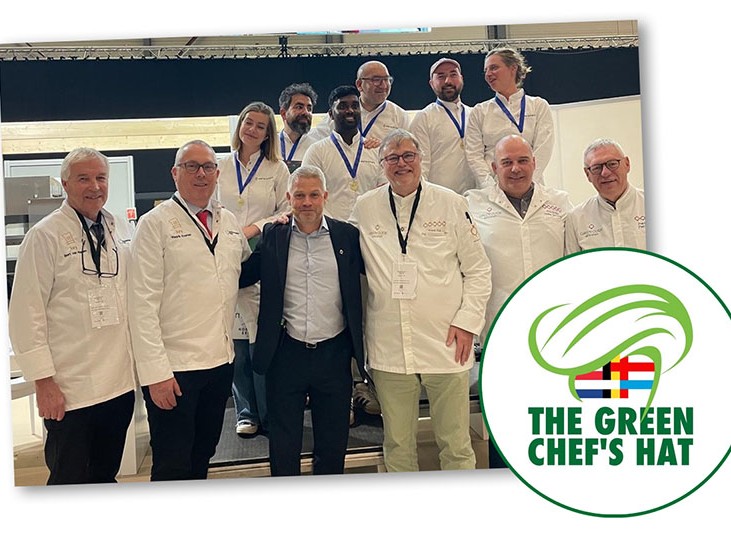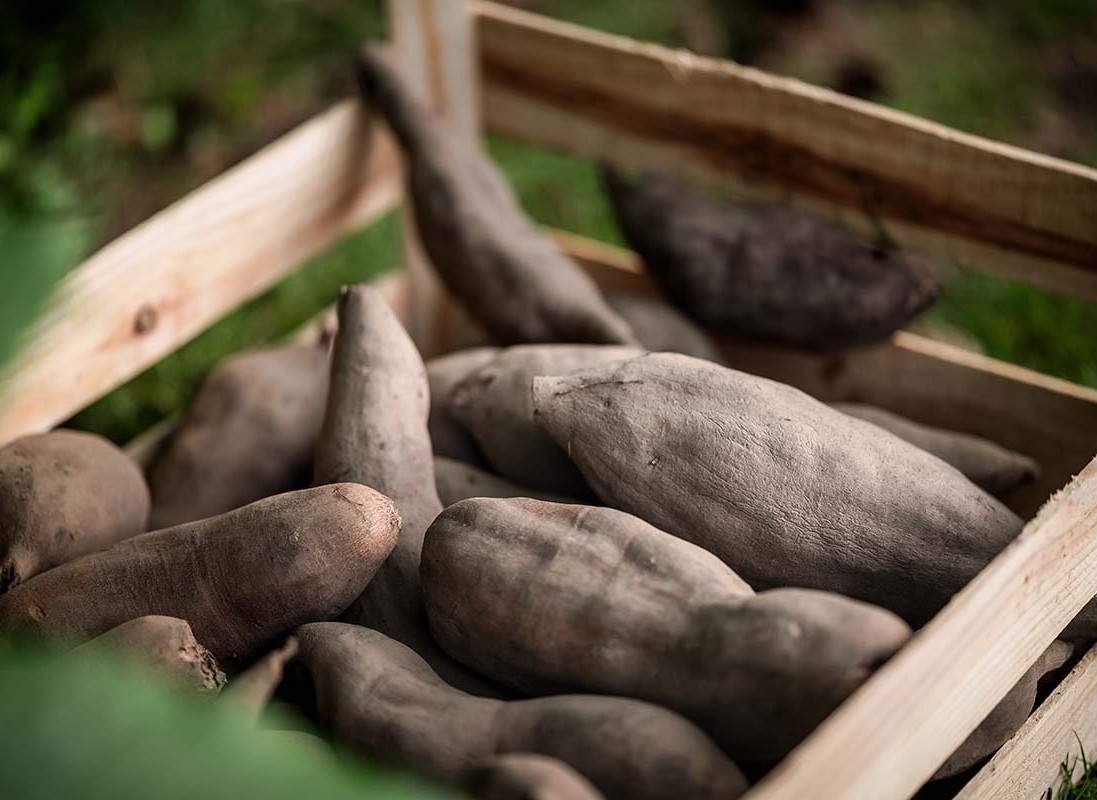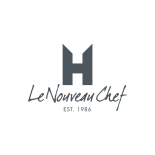Unleash culinary creativity with botanical pairings on the menu
What does it take to be a five radishes restaurant? Definitely a pairing menu with homemade juice, tonic, tea, kombucha, infusion, botanical drinks or -however you want to call it!
There is nothing mysterious about what it takes to get the highest rating possible by the We’re smart green guide. The criteria are posted on our website. We share these openly, to encourage the culinary world to make pure plants the hero. Like Frank Fol, the chairman says: “Any truly sustainable food culture must place fruit and vegetables centre stage. And plants are delicious and have loads of creativity, techniques and fun to offer to chefs all around the world”. Every newsletter we explore what it takes to join the highest acclaimed ‘five radishes club’. This issue is about drinks.
“Offers a selection of house-made mocktails, botanic and fermented non-alcoholic drinks, and the possibility to choose a non-alcoholic pairing with your menu” is one of the key criteria for chef and restaurant. The world of house made beverages is incredibly creative and broad. Our culinary reporter Sheila Struyck (chef sustainable gastronomy) visited professionals who create tonics, teas, infusions and so much more. Obviously, she started at the two best vegetable restaurants of the world, Rody Misseyer sommelier at ‘de Nieuwe Winkel’ and Aljandro Poveda Vidal, chef at El Invernadero, share some of their secrets. To understand how it works in a more casual restaurant she joined Anita Hagendorn -juice sommelier at Flores in Nijmegen. We showcase some innovative pairings from all over Europe ánd come to a few conclusions.
With ‘shrubs’ we create complex flavours ánd fight food waste at De Nieuwe Winkel
Rody Misseyer: I became a sommelier in botanical drinks because this world is much larger than that of wines or beers. There are no boundaries to our imagination.
What do you do?
I am the botanical drinks sommelier. We work with three people in the creation of the botanical drinks. I design the program and test new techniques, Hubert does the production and Tsjip supports us. In De Nieuwe Winkel we have a wine sommelier, a beer sommelier, a coffee expert , and a tea specialist. Our drinks pairing consists of all types of drinks, so together we create a menu. It could be that we start with a nice beer, then serve a wine and move to the botanical drinks. Of course we also serve a full botanical pairing. We use our best crystal wineglasses to emphasize that wines, beers and botanical drinks are equal in both quality and gastronomical value
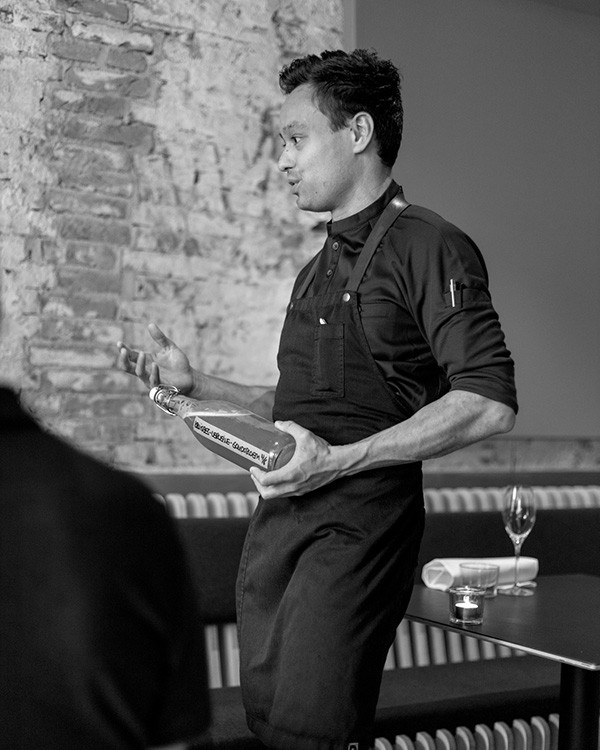
How do you create?
It starts with Emile (van der Staak, chef) and Elzelinde (our head of R&D). They determine the main ideas for the next menu, we create a mastersheet with the key components and ingredients. Elzelinde decides which culinary techniques to apply. Once the main flavors and ideas for the dishes are created, the sommeliers step in. Which flavours do we want to emphasise, which need a contrasting pairing? Which techniques will we use? As an example, we have a beverage with smoked lemonthyme, pear juice from a local orchard and Dutch smoked tea. This is paired with a dish with slightly smoked tempeh. The smoke is the link, the thyme is the additional flavour layer added to the experience.
What is the basis for your botanical drinks? Kombucha?
Well, our first drinks menu’s consisted indeed of a lot of fermented drinks (such as kombucha's, water kefirs and lacto fermentation). But soon we realized that it is not comfortable to drink only fermented botanical drinks with CO2. So our botanical drinks menu now is much more a combination of various techniques, like fermentation, vacuum destillation and enzymatic clarification.
We start with the light and fresh flavours move towards heavier. As a basis we often turn to homemade vinegars and shrubs. We serve many natural wines which, once uncorked, don’t last over the days we are closed. So we built a little solera system here -inspired by the sherry industry- and there I use those leftover wines to mature the vinegars. A shrub is a sweet-sour syrup, developed in the cocktail world. It is a great way to use leftover elements from the garden, the orchard, or the kitchen. The sourness in shrubs, which comes from the addition of vinegar, has a tartness that quenches your thirst by stimulating salivation . Vinegar and sugar also allows shrubs to be stored for long periods of time in the fridge.
What advice would you give to chefs and sommeliers who want to start?
We make all our drinks ourselves, because we have the manpower and we wish to provide a stage for the fruits, vegetables and herbs of the growers we work with. One of our suppliers is a social workplace for young people with autism, who make use of a fruit press as a daily activity. We did some projects together where they pressed aronia berries and quinces for us. Fermented drinks are easy to make but labor intensive to manage. We don’t pasteurise, so with the three of us we give daily attention to our brews. So if you are just starting, experiment with shrubs. They are fun, stable and you don’t need to invest in expensive machines.
Mead with hop, the homemade welcome drink sets the tone at El Invernadero
Alejandro Poveda Vidal: as a chef this is a very interesting area of creativity.
How do you seduce customers?
We don’t have waiters in the restaurant. We cook and we serve. And being proud of what we make ourselves, we make them enthusiastic. So when they come in we welcome them with the first homemade alcoholic beverage in history: mead. And then I explain the dishes and the pairings and people are willing to try. We use the well known alcohol categories as reference, so we serve everything in the ‘normal’ glass. Like ‘cider’type in a ciderglass. We even created a sweet ‘wine’ to finish the menu, like a digestive.
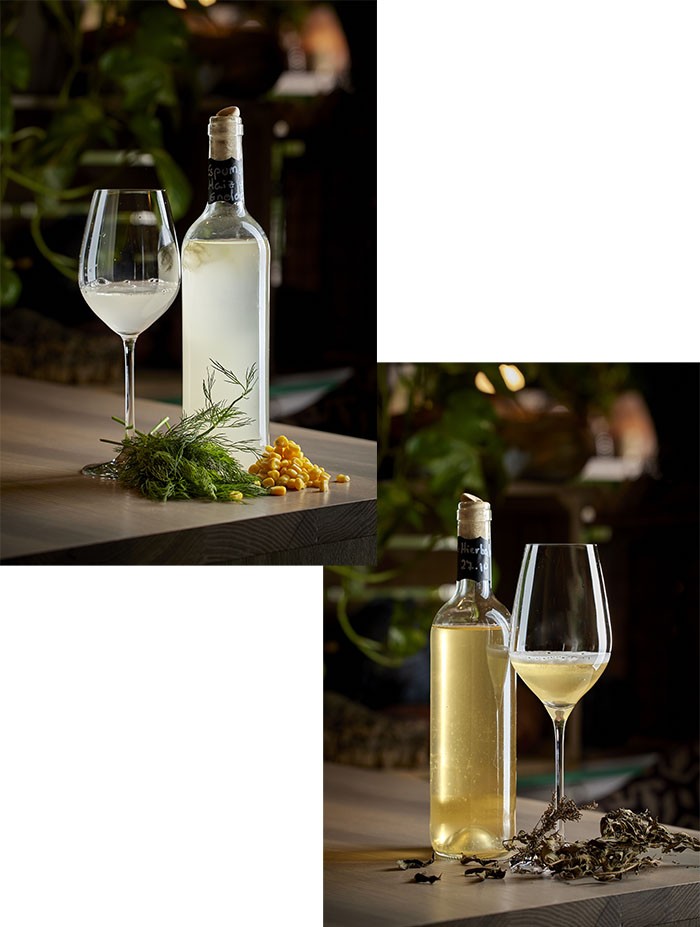
Why is this important for El Invernadero?
Well first of all because it is delicious and better for your health. Secondly, our objective is to reduce foodwaste and creating these drinks is a great way. The seasonal fruits are our great inspiration. For example, we use a lot of lemons and other citrics, we use the celery leaves, beetroot leaves and huacatay stalks. We keep the zest, scrapes and the juice to make citric kombucha and a citric wine. Lastly it is fantastically creative for all of us.
What is your personal favorite?
To me the inspiration is like with our dishes. The smells of home. I love our Rosemary and thyme kombucha, it reminds me of the mountains where I grew up. We serve it with rice cabbage and beetroot drink of the menu and the smoked flavour of the rice goes well with the acidy kombucha.
Where did you get your knowledge?
Two years ago I started to experiment, read and of course learn from Rodrigo, he is making fermentation from the 2015 and offering in his restaurant. We do infusion, maceration, fermentation and kombucha’s. We offer an average of 15 beverages at the same time and produce fresh every week. In sits in the kitchen prep list. It then rests in the fermentation room annex lab.
Anita Hagendorn – Flores (NL): “There are dishes where I prefer the ‘juice’ pairing over the wine, even though I am a trained wine sommelier"
To understand what happens at a more casual dining restaurant we spoke with Anita Hagendorn. The juice sommelier at Flores (5 radishes) (in Nijmegen Netherlands) recently declared the end of ‘wine-pairings’ on national dutch radio. Hagendorn makes kombucha’s of teas like verveine and green tea and uses lactofermentation. The creations start from the wine profile that she would typically advise with a specific dish. Even though Hagendorn calls herself a ‘juice-sommelier, she stresses that her creations are meant to pair well with the dishes, not a fantastic juice to drink in itself.
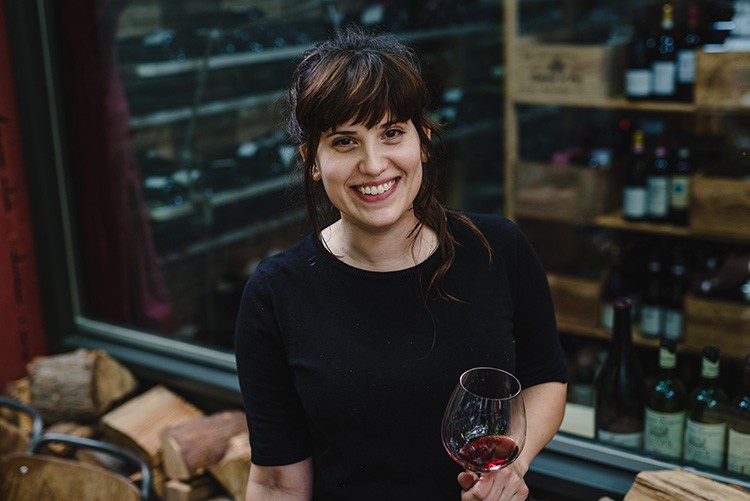
How does she get people to try? “Frankly, the aperitive really sets the tone for your menu. When you serve a good champagne, you also want to serve a gastronomic and generous alternative. I believe this could be the only aperitive to serve. A pairing is usually six to seven wines, that is more than enough, no? We are enthusiastic ourselves, because we make the drinks. So our storytelling at the table does magic. If people are intrigued, we generously offer a small sampler. This opens the mind. Lastly, to overcome the mental threshold, we price the juice-pairing slightly lower than a ‘normal’ pairing.”
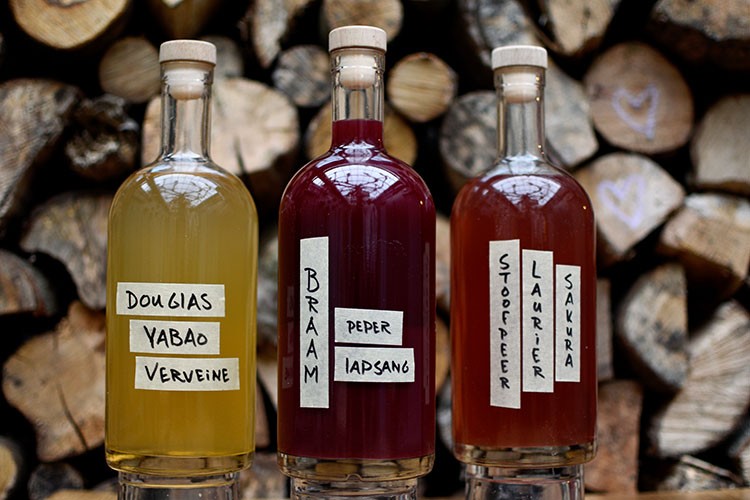
The aperitive Hagendorn created is a dahlia kombucha with camomile and a shrub of ‘yarrow leave (foraging)’, served from the siphon, to create the same sparkle in your glass. How did Hagendorn develop her skills? “Frankly, this is all about testing, experimenting, working hygienically, and keeping notes. When we started, I literally combined the flavours that I believed would complement the dish. I still had a lot to learn about the flavour developments with fermentation. And you only learn by doing”, she laughs. “My next plan is to connect our drinks menu more to the food ‘waste’ we create in the kitchen. That is my -or our- big project for this summer!” Given that chef Freriks is also a fermentation expert I am sure they will come up with exciting new flavours for Flores.
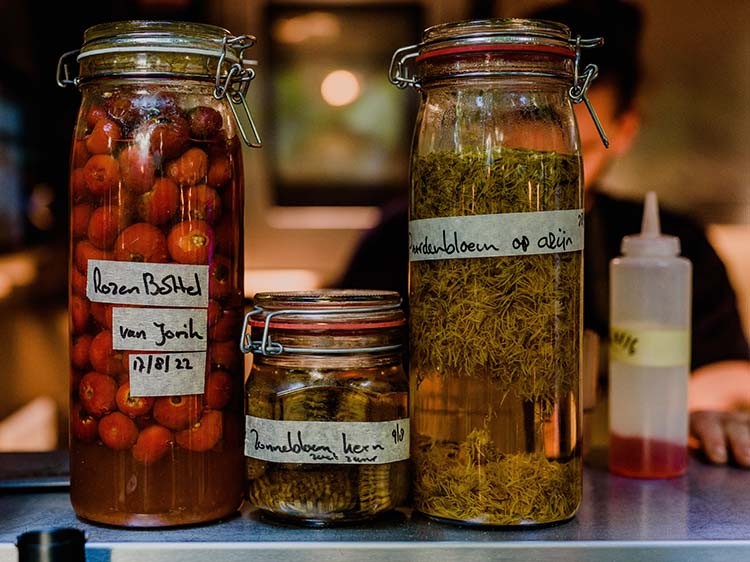
Four inspirational and proven combinations around Europe
As Rody Misseyer of de Nieuwe Winkel says: “There are so many creative avenues to explore beyond kombucha”. Here are a couple of imaginative and clever combinations that have proven to stand the test of time.
Entropy (Brussels) 4 radishes
Drink: beetroot juice with Samba tea (with note of red fruits), cherry vinegar, belgian shiso, Sichuan pepper and a few drops of rose.
Dish: Expression: Beetroot - Rosehip - Beersel cheese
Why: This achieves the same visual and olfactory aspect of a Beaujolais, a natural companion of beets. It promotes zero waste and health aspects.

Photo credits : Entropy
Waterhouse Project (London)
Drink: Warm broth of juiced kohlrabi, infused with skins of black garlic, with koji olive oil drops
Dish: Cornish pollock, mullet and mussels
Why: beautiful, caramelised sweet notes from the black garlic and a rich umami from the kohlrabi, contrast with the sweet and spice of the bouillabaisse inspired sauce.
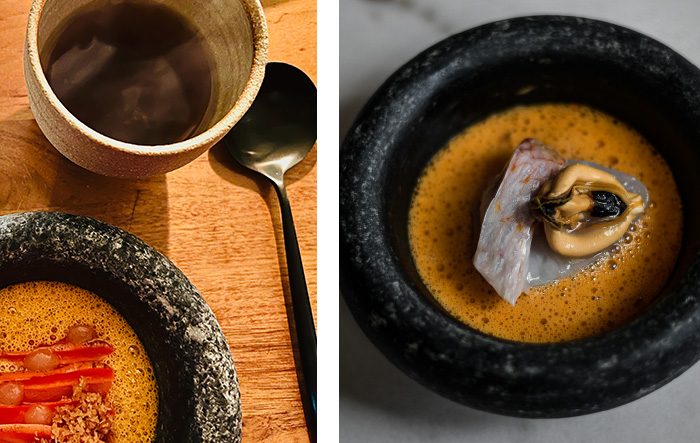
Photo credits : Sheila Struyck (left) and Waterhouse projects(right)
Nazka (Amsterdam)
Drink: Bebida of chargrilled romaine lettuce, botija olive brine, verjus, spritzed with soda.
Dish: ‘Vinicunca’: layers of oca potato from the Andes with a variety of aji sauces presented as the rainbow mountain of Peru.
Why: the huancaina sauce found in the dish is traditionally served with lettuce and olives.
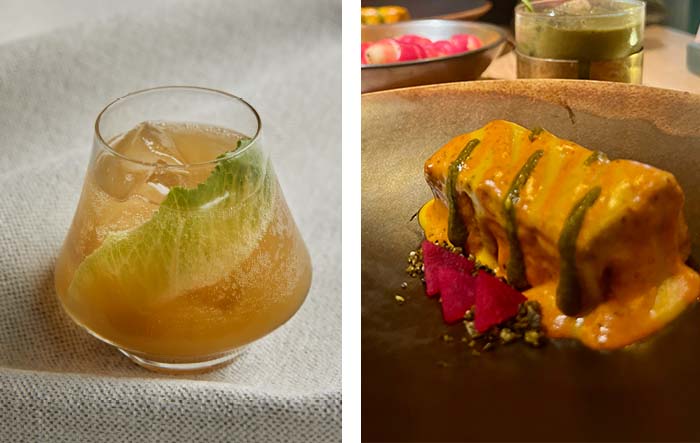
Photo left: Donata Kukyte , photo right : Sheila Struyck
De Nieuwe Winkel (Nijmegen) 5 radishes
Drink: A beverage with winter tarragon and liqorice and a a shrub made with seaweed and solera wine vinegar.
Dish: a ravioli with seaweed and a ‘buttery’ sauce.
Why: The liquorice fits the saltiness of the kombu perfectly. The acidity is just enough to cut through the buttery sauce. It's comfortable and complementary.
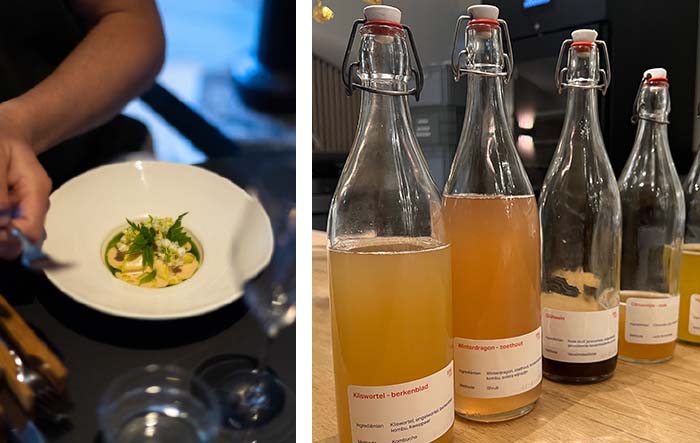
Photos : Sheila Struyck
Sheila Struyck : As a chef delving into this new world without boundaries was fascinating and a big adventure. Let me leave you with the lessons I gathered, the top tips to elevate your menu (and maybe gain some radishes).
- Consider a mixed ‘low’ pairing next to full non-alcoholic botanic pairing. Fits with the trend to drink less alcohol and elevates the botanic beverage to same level as your wines.
- Glasses and pricing also create level playing field with your alcoholic menu, to demonstrate you take it seriously. Consider equal pricing.
- Offer your (non-alcoholic) botanical drink or juice as a welcome drink, something you take pride in. That encourages new users to test and try.
- Go beyond kombuchas and cold, think tea and broths, experiment with shrubs and flavoured vinegars. Create a variation and build-up in the menu, like you would do with the various dishes.
